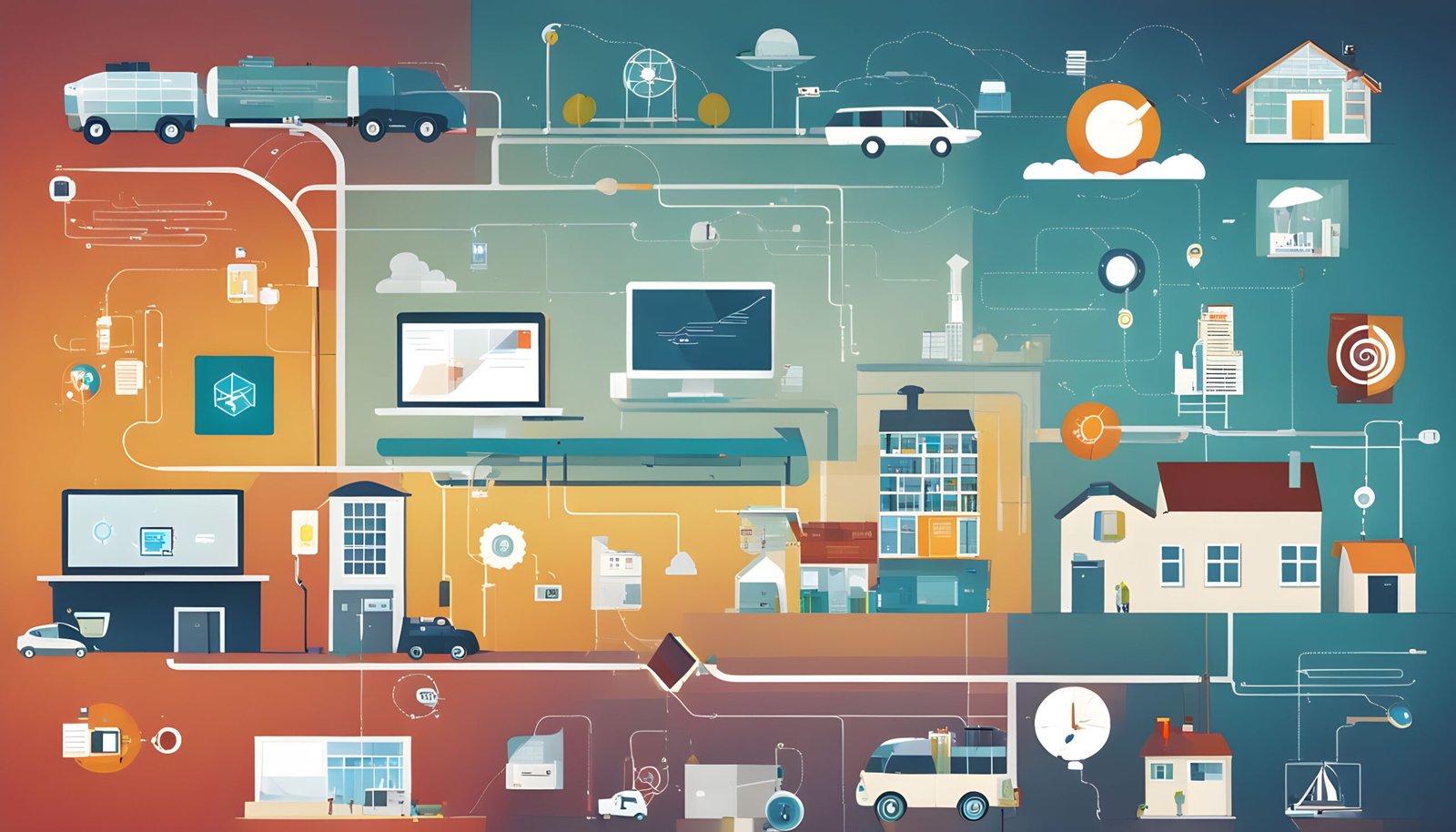
Internet of Things (IoT): A Revolution in Connectivity
The world of technology has always been marked by continuous innovation, but one concept that has truly transformed the way we live, work, and interact with our environment is the Internet of Things (IoT). In this article, we will delve into the fascinating world of IoT, exploring what it is, how it works, its impact on various industries, and the future it promises.
Understanding the Internet of Things (IoT)
At its core, IoT is all about connectivity. It refers to the network of physical objects, devices, vehicles, buildings, and even living beings that are embedded with sensors, software, and other technologies, allowing them to collect and exchange data over the internet. These “smart” devices are capable of communicating with each other and with central systems, enabling them to perform tasks, make decisions, and respond to changing conditions autonomously.
How IoT Works
The magic of IoT lies in the interconnectedness of devices. Here’s a simplified breakdown of how it works:
- Sensors and Data Collection: IoT devices are equipped with various sensors, such as temperature sensors, motion detectors, cameras, and more. These sensors continuously collect data from the physical world.
- Data Processing: The collected data is then processed and analyzed either locally on the device or in the cloud. Machine learning algorithms and artificial intelligence play a significant role in making sense of this data.
- Communication: IoT devices use various communication protocols like Wi-Fi, Bluetooth, Zigbee, or cellular networks to transmit data to other devices or centralized systems.
- Decision-Making: Based on the processed data and predefined rules or algorithms, IoT devices can make decisions or trigger actions. For example, a smart thermostat can adjust the temperature based on occupancy patterns and weather forecasts.
- Feedback Loop: IoT devices often receive feedback or commands from users or other devices, allowing them to adapt and respond dynamically to changing circumstances.
Impact on Various Industries
IoT has made a profound impact on numerous industries, transforming the way they operate and deliver services:
- Healthcare: IoT-enabled medical devices, wearable health trackers, and remote patient monitoring systems have revolutionized healthcare by enabling real-time health data collection, enhancing patient care, and reducing hospitalization rates.
- Manufacturing: IoT has ushered in the era of Industry 4.0, where connected machines, robots, and sensors optimize manufacturing processes, reduce downtime, and improve product quality.
- Agriculture: Smart farming applications use IoT to monitor soil conditions, crop health, and weather patterns, resulting in increased crop yields and reduced resource usage.
- Transportation: IoT plays a pivotal role in smart transportation systems, offering real-time traffic management, efficient routing, and even autonomous vehicles that can communicate with each other to ensure safe and smooth journeys.
- Smart Cities: IoT contributes to the development of smart cities by providing solutions for intelligent energy management, waste disposal, traffic control, and public safety.
- Retail: In retail, IoT enables personalized shopping experiences, inventory management, and supply chain optimization.
Challenges and Security Concerns
While IoT holds tremendous promise, it also presents challenges, particularly in terms of security and privacy. As more devices become interconnected, they create potential vulnerabilities that can be exploited by malicious actors. Ensuring the security of IoT networks and devices is paramount to prevent data breaches and protect user privacy.
The Future of IoT
The future of IoT is incredibly promising, and its growth shows no signs of slowing down. Here are some trends and developments to watch out for:
- 5G Connectivity: The rollout of 5G networks will significantly enhance the speed and reliability of IoT communication, enabling new applications and use cases.
- Edge Computing: IoT devices are increasingly equipped with edge computing capabilities, allowing them to process data locally and reduce latency, making real-time decision-making even faster.
- AI Integration: Artificial intelligence and machine learning will continue to be integrated into IoT systems, enabling devices to become more intelligent and adaptive.
- Interoperability Standards: The development of interoperability standards will be crucial to ensure that different IoT devices and ecosystems can seamlessly work together.
- Environmental Impact: IoT can play a vital role in environmental conservation by enabling smarter resource management and sustainability initiatives.
Conclusion
The Internet of Things has already transformed the way we live and work, and its potential for further innovation and disruption is boundless. From healthcare to agriculture, transportation to smart cities, IoT is reshaping industries and enabling a more connected, efficient, and data-driven world. However, as IoT continues to evolve, addressing security and privacy concerns remains a critical challenge. With the right strategies and safeguards in place, IoT promises to revolutionize our lives in ways we can only begin to imagine. As we step into this connected future, one thing is certain: the Internet of Things is here to stay, and its impact will continue to be felt across the globe.


Just wish to say your article is as surprising. The clearness in your post is just cool and i could assume you’re an expert on this subject. Fine with your permission allow me to grab your RSS feed to keep updated with forthcoming post. Thanks a million and please keep up the enjoyable work.